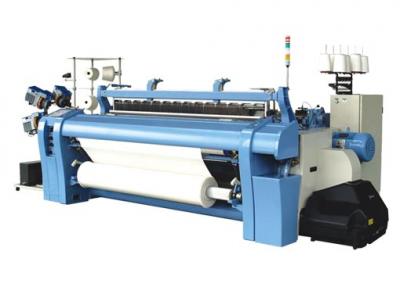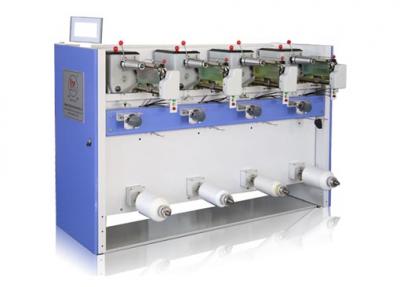Textile cone winding machine is a special equipment in textile industry. Winding, as the last process of spinning and the first process of weaving, plays the role of "bridge" connecting the preceding and the following, so it occupies an important position in the textile field.
Main tasks of
Textile cone winding machine
1. Change the package and increase the volume of yarn in the package.
Through winding, the yarns with less capacity are connected together to form larger capacity bobbins. The capacity of one bobbin is equivalent to more than 20 barrel yarns. The bobbin can be used for warping, twisting, weft winding, dyeing, weft on shuttleless looms and knitting yarns. If these processes use the yarn directly, it will cause too much stop time, affect the improvement of production efficiency, but also affect the improvement of product quality. Therefore, increasing the volume of package is a necessary condition to improve the productivity and quality of the later process.
2. Eliminate yarn defects and improve yarn quality:
There are some defects and impurities in the yarn produced by the cotton spinning mill, such as slub, detail, double yarn, weak twist yarn, neps and so on. When winding, yarn clearing device is used to check the yarn, remove the defects and impurities that affect the quality of the fabric, improve the uniformity and finish of the yarn, so as to reduce yarn breakage in the later process and improve the appearance quality of the fabric. Defects and impurities in yarn are most reasonable to be removed in winding process, because the work of each cylinder is carried out independently in winding process, and other cylinders can continue to work unaffected in dealing with broken ends in one cylinder.
Technical requirements of Textile cone winding machine:
1. Proper winding tension does not damage the original physical and mechanical properties of the yarn.
2. The drum has large volume, good shape and easy unwinding.
3. Yarn joints are small and firm, forming knotless yarns as far as possible.
4. The tube used for warping should be fixed length, and the tube used for dyeing should be uniform in structure (even rolling).








 +86-575-86333303
+86-575-86333303  sales@wsftex.com
sales@wsftex.com
 Rifa Road, Nanyan High-tech Zone, Xinchang, Zhejiang, China
Rifa Road, Nanyan High-tech Zone, Xinchang, Zhejiang, China